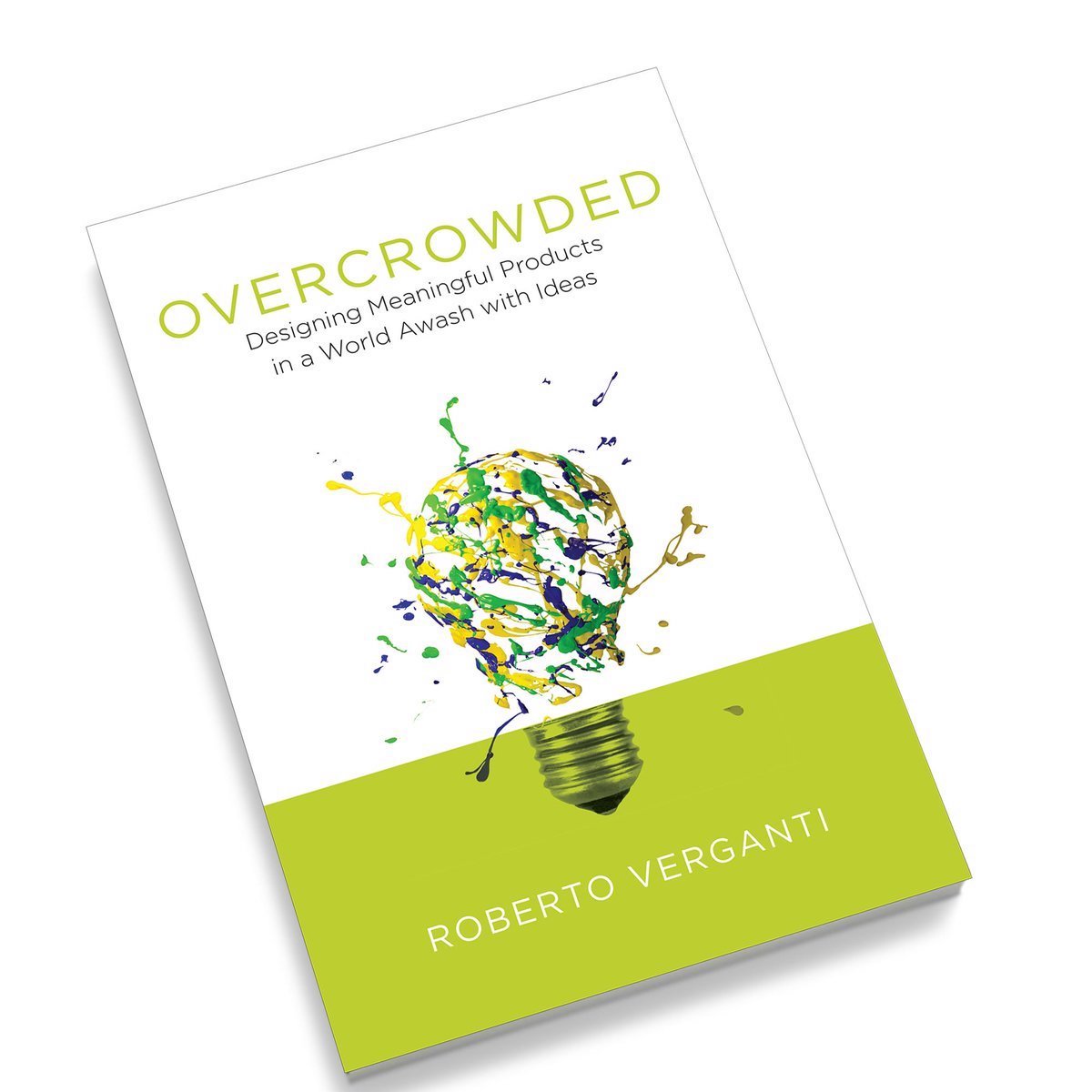I was just in Germany, in Herzogenaurach to be precise, at Adidas headquarters. (Hardly anyone knows where Herzogenaurach is — it’s a 20 minute taxi from Nuremberg.) I was at a conference organized by my old friend (and co-author) Roberto Verganti, from the business school at Politecnico di Milano. Years ago, he and I had a debate in Milan about the value of Human-Centered Design (HCD) and the way it is normally practiced. To the audience’s great surprise, we both agreed:
- HCD is a powerful tool for improving existing products. That is, it is a powerful tool for incremental innovation.
- HCD, by its very nature (hill-climbing plus a kind of design by committee), is a really bad tool for radical innovation.
In his book Overcrowded, Roberto expands his argument for methods of getting to radical innovation. He says that the standard IDEO rules for brainstorming by never criticizing is wrong. Great ideas come about when a small group of people continually criticize one another’s work. Note that the criticism has to be constructive and helpful. The word “critique” might be better.
This matches my long-stated personal views. For example, I when someone praises my work, that’s nice to hear, but I don’t learn anything. When someone criticizes it, if the criticism is intelligent and thoughtful, I learn. I might still think I was correct, but I have then learned that I have presented the ideas badly. Or I might determine that my ideas are wrong, or perhaps incomplete. That’s good to know.
So think about it: Criticism is good. Constructive criticism, that is. (Roberto gives numerous examples, from Claude Monet and the merry band of impressionist painters who revolutionized art to the Nest Thermostat (among others).
The book emphasizes the love over need. Design things people will love. Moreover, start with yourself: if you, the designer, don’t love the idea and the design, nobody else will. Take the thermostat; using HCD to make a better thermostat in the old days would make the complex programming easier to understand and do. But programming the thermostat was hated. Nest made one that eliminated the need for programming: it learned all by itself what your preferences were. It was a thermostat that people loved.(I have problems with Nest, but that is a different story, namely that once the radical innovation is over, we still need HCD to improve it. Nest lost its way.)
– Don Norman
Verganti, R. (2016). Overcrowded: designing meaningful products in a world awash with ideas. Cambridge, Massachusetts: The MIT Press. https://mitpress.mit.edu/books/overcrowded
Our earlier paper:
Norman, D. A., & Verganti, R. (2014). Incremental and Radical Innovation: Design Research vs. Technology and Meaning Change. Design Issues, 30(1), 78-96. doi:10.1162/DESI_a_00250
https://jnd.org/incremental_and_radical_innovation_design_research_versus_technology_and_meaning_change/






